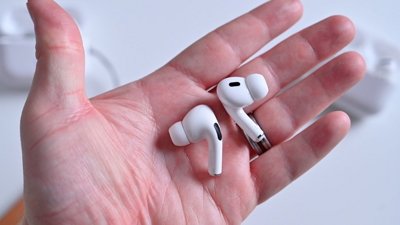This is an archived page containing old information. It will remain viewable for historic purposes, but as COVID-19 moves on from a pandemic to just being a part of our lives, there is no longer any reason to maintain a dedicated info page.
The COVID-19 strain of coronavirus has spread throughout the globe causing quarantine to become the new normal. The economic downturn caused by perpetual lockdown has impacted everything across the global supply chain and retail alike.
Apple is one of the biggest companies in the world, and much of the company's reaction to the outbreak set the standard for other firms moving forward. As countries around the globe have cautiously reopened, Apple continues to operate with every safeguard in place.
A new all-digital WWDC in June 2020 and a later-than-normal iPhone event were not the only impacts to Apple's business; find out everything Apple has done during the pandemic, and what they continue to do even as the world tries to find some semblance of normal.
Apple and apps for coronavirus
Apple COVID-19
Apple has launched a new app and a website with resources to help people stay informed, and take the proper steps to protect their health during the spread of COVID-19. The app is called "Apple COVID-19" and will walk users through a questionnaire and offer guidelines provided by the CDC.
An update to the COVID-19 app added state department information and additional self-care tips.
Not to leave first responders out of Apple's efforts, Apple released a second app, "First Responder COVID-19," in partnership with Stanford Medicine. The app can be used by first responders to determine the need for a COVID-19 test, and then if they need one, contact Stanford for testing.
Apple revealed during its Q2 earnings call that the Apple COVID-19 app had been installed over 2 million times.
Another update to the app added guidelines for quarantining, and helpful information for those who are pregnant or have newborns.
Exposure Notification API
Both Google and Apple released APIs for use by official health authorities that can track the spread of the coronavirus across platforms. The service is available on both Android and iOS and provides data on an opt-in basis.
Over 50 initiatives are trying to carry out some form of contact tracing. It can be overwhelming to keep track of what works, and which has your privacy in mind, so AppleInsider is collecting that data for you.
Check out our up-to-date contact-tracing guide.
The apps rely on Bluetooth in their respective devices to track the spread of coronavirus based on proximity. Privacy, transparency, and consent are paramount, and the companies will make the data they gather open for research.
In a meeting between Tim Cook and European Commissioner Thierry Breton, Cook revealed the exposure notification initiative would launch earlier than expected. The joint effort between Google and Apple was made available to developers on April 28, 2020.
The exposure notification API started within Apple and was produced at an unprecedented speed. The project "bubble" was created out of necessity in the hopes to help stop the spread of the virus. Google employees had their own project, "Apollo," and joined with the Apple team shortly after its creation.
Before making the project public, Tim Cook met with Sundar Pichai over a call and made the collaboration official. The Google CEO has since stated that he'd like Apple and Google to work together again on other projects.
The API was released to health agencies on May 20 alongside the public release of iOS 13.5, which enabled the feature.
A Swiss company detailed its experience creating the first concept for Contact Tracing and submitting it to Apple. This ultimately led to Apple, the Swiss scientists, and Google teaming up to create the API.
Public figures urge Apple and Google to prevent unofficial use of the API in apps, although that was exactly the stance Apple took when launching the API.
On June 18, it was reported that the UK will abandon its initial attempts at making its own app, and will instead use the Contact Tracing API from Apple and Google. Later the same day, Canada announced the intention to create an app using the API as well.
In July 2020, Ireland released an updated contact-tracing app using Apple's API. The developers working on the app said that using the API sped up the process and allowed them to get the app into consumers' hands sooner.
Google and Apple are planning a joint server which will centralize all contact tracing data and eliminate chances for duplicated data. They will partner with the Association of Public Health Laboratories to accomplish the goal and better the quality of data collected.
When using iOS 14, users can activate exposure notifications within the Settings app. Select your region, and if it is participating, you can use this to log positive test results or be alerted to potential exposure.
About the 2019 Novel Coronavirus and COVID-19
The primary strain of coronavirus behind the pandemic is a mutation first discovered in Wuhan, China in December of 2019. The disease was originally thought to spread from direct contact with mucus but has since been found to spread through droplets.
Attempts by the Chinese government to contain the infection before it spread failed, and it quickly spread through all of China by the end of January.
February to mid-March saw accelerated global contamination, starting in Italy and spreading through Europe, Japan, then the US. The first two weeks of March saw the coronavirus fully take hold in the US, and businesses began losing customers or shutting down completely.
The best ways to protect yourself from coronavirus are "Social Distancing" and frequent hand washing, as stated by the CDC. Masks and face coverings will help protect those wearing them, as well as those around them.
Reusable masks should be washed in hot wash cycles and dried at a high temperature. Disposable masks can last a few hours per use and should be worn according to the package instructions.
The coronavirus can be killed by using alcoholic hand sanitizer, and practicing a six-foot distance from everyone makes you more likely to be safe from exposure due to others being sick. The virus can live for a few hours on some surfaces, so be sure to disinfect, use hand sanitizer, and don't touch your face.
The CDC has updated findings on surfaces, stating that while the virus may live on some surfaces, it is a much higher likelihood to catch it from another person, so quarantining packages and groceries may not be necessary.
With schools and businesses shutting down across the US, just as they have in other countries affected by the virus, the strain that the coronavirus has placed on the world is now being felt in full. Staying home and keeping things clean is the best thing to help stop the spread.
In the United Kingdom, the government and its National Health Service have urged people with symptoms to stay at home, to only contact the non-emergency NHS number 111 in instances where they are concerned for their well being, and to perform online symptoms checking where possible. Social distancing is also being practiced, with the government offering dedicated online support and daily briefings about the virus.
How the pandemic affects Apple
From the beginning, Apple recognized the threat from coronavirus. Right before its quarterly earnings call for Q4 2019, Apple put out a statement suggesting that an outbreak in China would likely impact their first-quarter results. Apple bet wide, thinking it had more than covered its bases by doing so.
The virus took hold, factories shut down, and parts of Apple's supply chain were not in full operation. Usually, these companies take a break for Lunar New Year, but this time they couldn't get workers to return. Each day that the quarantine was not lifted created more worry among Apple pundits.
Apple and its supply chain partners like Foxconn began shuffling things around, moving manufacturing out of China to nearby facilities in Taiwan and India. This was the kind of secondary fail-safe that Apple had at the ready in case of situations like the one that had taken hold in China.
It was not long after those initiatives were triggered that the first cases outside of China began to show up. The coronavirus had gone global, and now there was no getting away from it.
Mobile World Congress was set to occur in Spain, but one company after another began withdrawing until it was ultimately canceled.
Conferences around the world began seeing cancelations of the public-facing portion of events, and as the coronavirus spread to the US, Apple was faced with the same issue. WWDC moved online only in 2020.
Employees are being affected too. Apple's CEO Tim Cook And SVP Eddy Cue may have been exposed to the virus at a birthday party for Universal Music CEO Lucian Grainge, though since the company never announced that either had contracted it, they likely avoided it.
A mid-March update from a research firm reported that product availability began normalizing in mid-March, meaning Chinese production was likely back on track. Supply for the iPhone 11 series, AirPods Pro, and standard AirPods were all at average availability soon after that.
Foxconn reports that as of March 23, 2020 they had achieved enough workers for seasonal demands. This was just in time to begin work on the "iPhone 12." The company began taking extra precautions with its employees, restricting them to groups of 20 and performing temperature checks.
Some markets were taking notice of the need for contactless payment systems, such as Publix. The supermarket chain added support for Apple Pay and other contactless systems in early 2020.
Some things remained unchanged, however, as Tim Cook gave his commencement address to OSU again in 2020, albeit digitally.
The CEO also addressed employees in a digital town hall meeting, asking employees to send in questions. The meeting was company-wide and addressed Apple's response to the coronavirus.
The Unicode Consortium announced that while the emoji for iOS 14 would release as expected, the update that would be included in 2021 will be pushed back six months. This would push the new emoji characters from a fall release to a spring 2022 release on the next iOS.
Tim Cook was included in a group of 50 business executives chosen by the White House to help determine when and how to reopen the US economy. He was also included in a task force specifically built to discuss California's economy restart going forward.
In an interesting turn that could have impacts well beyond the coronavirus outbreak, a New York executive order made marriages over FaceTime and other video chat services legal.
On May 5, Apple announced that WWDC would be held remotely and take place on June 22. The conference would last a week and feature a new "Swift Student Challenge."
While Apple was expected to see a huge drop in sales and see a terrible quarter, that simply never came to be. While some hardware sales were down, services were up, and Apple managed to pull off a 1% growth in revenue year over year. Mac and iPad sales did especially well as more people worked from home and needed video-chat-friendly devices.
Apple's operations chief, Sabih Kahn, outlined some of Apple's response to coronavirus in the supply chain in May's Supplier Responsibility Progress report. Some of these actions included health screenings, new PPE guidelines, and reconfigured floor plans for social distancing.
As of May 27, Apple's stock had regained all of its losses since its initial loss at the start of the coronavirus pandemic. Their strong product release schedule and swift actions have helped keep the company financially stable throughout.
Apple's response to coronavirus
Store closures
Apple's developer conference wasn't the only thing affected by the global outbreak of coronavirus. At first, Apple just cautioned their stores to stop in-store try-ons of Apple Watches and AirPods, then all in-store "Today at Apple" sessions were stopped until further notice. The Apple Stores that were set to reopen in China continued to do so, since they had seemingly stopped the spread of the virus at that stage.
Starting with Italy, then Spain, and ultimately the US; Apple closed down all retail stores outside of China. Skeleton crews with only a few employees returned only to take care of already scheduled in-store pickup of orders and repairs.
As a result of the US President announcing the need to restart the economy by mid-April, Apple announced its intent to start re-opening stores. This was opposed to the company's previous two announcements, which first had stores open by March 27, then closed indefinitely. That re-opening plan was short-sighted and faced numerous setbacks as closures contined long after that.
While Apple Stores remain closed, Apple is offering subsidies to its service providers for offering pick-up and dropoff repairs. Apple is providing $20 each for iPhone, iPad, Apple Watch, and Beats repair and $25 for Mac repairs.
Apple, in a memo to employees on April 2, 2020, said it planned to keep all U.S. retail stores closed until early May as the COVID-19 pandemic continues to wreak havoc on the nation into 2021.
Store Openings
Apple has over 500 stores worldwide, and it can be difficult to keep track of all of the store openings and closings, and what services are available. AppleInsider has made a tracker to help.
April 18, 2020 saw the first Apple Store outside of China reopen. The single store in South Korea opened with a focus on support and in-store pickup, although shoppers can still come in to browse as normal.
Stores were planning to reopen in Australia and Austria by mid-May. There are 20 stores in Australia and one in Austria, and opened with restrictions in place to protect the customer and employees. Plans to open some stores in the US were underway at the same time and occured on a case-by-case basis.
While stores around the world began to open, Apple updated its shopping website to better mimic the physical store experience. The new site prominently displays each available service for an online customer with an improved layout.
The first Apple Stores in the US were set to open the week of May 10th. The stores opened on a case-by-case basis, and as with the other global stores, they did so with a focus on keeping employees and customers safe. The rest of the US attempted to restart the economy with much reluctance going forward, and Apple attempted to set the example of handling modern retail in a pandemic.
The first four states to open Apple Stores were Alaska, Idaho, South Carolina, and Alabama.
The first store in Italy will reopen on May 19, located in Venice. Another 28 locations in the U.S. and 12 in Canada will be opening during the same week. Apple's flagship store in Sydney, Australia, is scheduled to open soon.
In a public letter from retail chief Deirdre O'Brien, it is detailed how Apple intends on reopening stores across the U.S. and globally. You can find out if your local store is going to reopen using the "Find a Store" tool.
Work From Home
The development side of Apple took a hit too. As the coronavirus began its spread across the US, Tim Cook encouraged its staff to work from home when possible.
This worked for the most part, however, some employees found that the culture of secrecy leads to a lot of questions about what could be worked on at home, and who still needed to work on-site. Engineers working on new and unreleased products had to continue going into the Apple campus because unreleased products are forbidden from leaving the site.
Work conditions from home continue to impact employees as they complain of reduced efficiency while working at home with kids. Apple has attempted to mitigate this by offering different hours or aid to those who are struggling, but the lack of child care still leaves a burden on those working from home.
In mid-March, Cupertino issued a lockdown over six counties that prevented employees from commuting to the Apple Park campus. A drone video shows how eerily empty the campus is during the lockdown.
The lockdown has of course added another wrinkle to device testing and prototyping. Apple has had to lighten up its restrictions for employees to allow them to take unfinished devices and parts home. This is a major risk and represents a big change in how things normally operate.
Employees who cannot work from home due to the nature of their job, like janitors or contractors, have been promised full pay during the stay at home order. However, some employees, like the contracted bus drivers, worry that this might end as soon as May.
To further complicate things, engineers usually travel to China during this phase of manufacture and processing of the new iPhone. Instead, they have to rely upon video chats to walk Chinese employees through the steps of assembling the new devices.
Apple hires interns every summer and despite the outbreak, will be doing so again in 2020. Apple expects to hire 1,000 interns for in-person and online work while providing them with the same care and protection afforded to regular employees regarding coronavirus.
A report in mid-May suggests that Apple will be bringing employers back to their offices over the coming months. Essential personnel who cannot work from home easily will be the first to return, according to those familiar with the matter.
An internal memo sent to employees states that Apple Park will begin opening back up in a phased approach. The first set of employees is set to return on June 15 with precautions in place to prevent any potential spread of COVID-19.
Services
Apple services each had some level of attention on them due to the coronavirus. Apple News gained its own dedicated section to detail what was happening with the virus and provide official sources along the way.
Apple TV+ shows still in production for upcoming seasons were put on an official production halt until worries about the coronavirus had passed. Content providers for iTunes and Apple TV began considering releasing some content early, as Disney did with "Star Wars: The Rise of Skywalker."
Movies still in theatres are coming to iTunes for purchase or rental sooner than normal, with a few films from Universal coming first, and Disney movie "Onward" being up for purchase early too. Paramount is releasing "Sonic the Hedgehog" early as well for purchase.
Apple made some of its Apple TV+ programs free. All users, including those without a paid Apple TV+ subscription, can watch "The Elephant Queen," "Little America," "Servant," "Dickinson," and "For All Mankind." Programming suitable for children includes "Helpsters," "Ghostwriter," and "Snoopy in Space."
Apple Card cardholders were offered the ability to miss their March and April payment interest-free by using a new "Customer Assistance Program" with Apple Support. With no signs of the pandemic slowing down, users can request payment deferment for May as well.
The App Store changed its guidelines for Apps related to coronavirus or containing the name "COVID-19" to restrict all uses of the terms to officially sourced apps. No entertainment or game apps may use the terms in their titles. This is to help push official sources up and prevent the spread of misinformation.
Apple has started sharing more information about the coronavirus via its own services by advertising the White House statements in all of their media apps.
Another initiative is a new show with Oprah where she interviews doctors about the coronavirus and discusses what people should be doing during the outbreak. The show called "Oprah talks COVID-19" is on Apple TV+ but does not need a subscription.
If you think you are showing symptoms of COVID-19 just ask Siri for more information or help. Apple has added a function that will let users ask Siri questions about the outbreak using data from the CDC. And don't forget the aforementioned Apple COVID-19 app.
Apple Maps has been updated with a small reshuffle of its search terms to provide users with easier access to hospital and food delivery searches. The business submission page also has a new section to streamline adding COVID-19 testing centers to maps.
Aggregated location data from Apple Maps will be publicly available until the end of the crisis, and updated daily, says Apple. A new website for getting the data via a CSV package has been created, allowing users to see how well different areas around the world are doing with the stay at home measure.
The Maps app will show coronavirus testing sites in the US and Puerto Rico. The option appears within the nearby section of the app.
Apple has started a $50 million fund for indie music labels and distributors. This is to combat the lack of pay and damage to the music industry caused by social distancing practices.
It appears that the fund will go toward one-off advance payments pulled from future Apple Music royalties. Only labels and distributors with a direct distribution deal in place with Apple Music qualify, and those that do must also meet a minimum of $10,000 in quarterly Apple Music earnings. The limitation rules out indie labels distributed through larger labels.
Another Apple Music initiative called "Stream Local" was created to promote South African musicians during the crisis. Starting April 11, users can check out playlists and albums in a special section of the App Store featuring popular South African artists.
Apple has outlined some activities for kids to perform while stuck at home. Using an iPad or iPhone, there are different activities listed for every day of a month.
Donations
Apple has always made some contributions when disasters affect people on some monumental scale. Their contributions scale from pure financial donations to care packages. The coronavirus is no exception, even when things were localized to China, Apple was ready to provide help.
In a tweet, Tim Cook said that Apple would donate directly to the Protezione Civile, which is the Italian Government's official emergency response department. The organization has been in charge of taking action to prevent the spread of the coronavirus.
As of March 14, Apple had donated over $15 million worldwide, including money donated to San Jose to offset losses from moving WWDC to an online-only conference. Tim Cook also declared that Apple would be supporting "Silicon Valley Strong," an initiative from the San Jose district office to help people remain informed throughout and get donations for local businesses.
March 24, Apple said they are donating their reserve of face masks to those in need. Over 9 million masks were donated to US health facilities and more to other parts of the world. Tim Cook provided an update on April 5, saying that Apple had donated 20 million masks and had designed its own face shields for donation as well.
Apple released documentation for how to handle and clean the face shields. The page titled "Assemble and adjust your Face Shield" outlines the item as being made of three parts: the Face Shield itself, a forehead band, and a latex-free silicone strap. The three-piece design and simple components are designed to pack flat to 100 per box and can be assembled in less than two minutes.
As of April 17, Apple has donated over160,000 face shields to Los Angeles. They then made the guide for manufacturing the face shields public and offers support to those who endeavor to do so, even from home. Although it is encouraged that the manufacturing of the product is left up to experts.
The Q2 earnings call revealed that over 7.5 million face shields have been produced by Apple so far, with millions more coming each week.
Announced on April 1, Apple has doubled its contributions to China's coronavirus relief efforts. Apple originally donated 20 million yuan to Beijing-based China Foundation for Poverty Alleviation, which offered support to six hospitals in Hubei, including a makeshift hospital in Wuhan.
The new donation brings Apple's total in China to $7 million (50 million yuan,) which will go on to help fund longer-term public health recovery.
America's Food Fund is an effort from Emerson Collective, Apple, and the Ford Foundation to provide funding to beneficiaries like World Central Kitchen and Feeding America. This is a response to the rapid growth in unemployment and loss of financial stability in homes across the world as the coronavirus pandemic escalates.
Apple and Laurene Powell Jobs' Emerson Collective were the first to donate, sourcing $12 million for the launch of the fund.
An event arranged by Global Citizen and the World Health Organization (WHO) called "One World: Together at Home," will air April 18 as part of a continuing initiative to drive funds to the WHO's COVID-19 Solidarity Response Fund.. The project has raised $35 million over the past week, and Apple announced they had provided $10 million in funding and will also stream the event live using their services.
India retailers have been receiving aid from Apple, either through extended loan terms or helping with rent or salary of employees at as many as 500 stores.
Apple has awarded $10 million from its advanced manufacturing fund to a company working on COVID-19 test kits. COPAN Diagnostics will use the funding to accelerate the production of the test kits from just a few thousand to a million per week by the end of July. Apple will also aid in the production of machinery in the larger factory they are acquiring.
A report in February 2021 states that Apple's donation to COPAN enabled hiring 250 employees which increased production of test kits by 4000%. COPAN opened a new manufacturing facility in southern California as well, with Apple's help.
Looking beyond coronavirus
Every change, cancellation, or rescheduling is another small impact on a company known for being slow to change. Apple has had to be quick on its feet these past few months, and the end result may maintain some of these new changes.
The App Store ban on misinformation directed at coronavirus could easily lead to more guidelines surrounding health, news, and information apps. This is a sticky territory to enter, as people may not like having Apple decide what is considered valid information or not.
WWDC moving online could mean big changes for the conference and every Apple announcement moving forward, that is if they take going online-only very seriously. Given the nature of the announcement, there is sure to be some curation and Apple service aspect to the conference. If Apple is forced to innovate in how it presents developers' new information, it will trickle down to bettering the consumer-facing information as well.
Just as encountering and overcoming challenges related to a remote conference can lead to innovation, so can forcing developers and engineers to work from home. Some of the complaints surrounding software and hardware today are that engineers seem to not have to use it themselves. If anyone can improve telework and remote education capabilities, it's going to be the sequestered Apple engineers forced to dogfood their own products.
Ultimately the latest coronavirus will pass, and we can all get on with our lives, but the impact it has had on today's society and Apple itself will surely be seen in how it handles itself in the future.
AppleInsider coronavirus tips
- How AI staff work from home
- Free apps and services
- How to deposit checks from home
- How long coronavirus can live on surfaces
- Remote learning systems examined
- How to work or learn from home
- Best apps for COVID-19 info
- Best iOS board game replacements
- Best livestream production tools on Mac
- How to use Group FaceTime
- How to be better at video conferencing
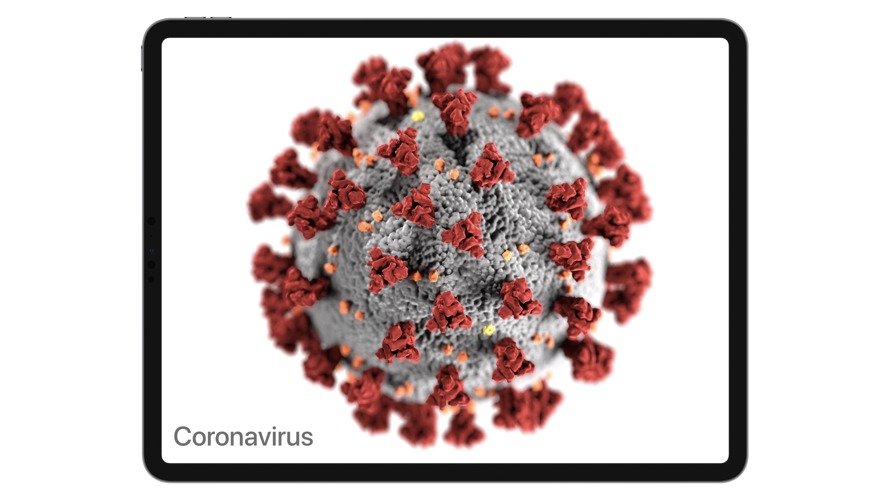
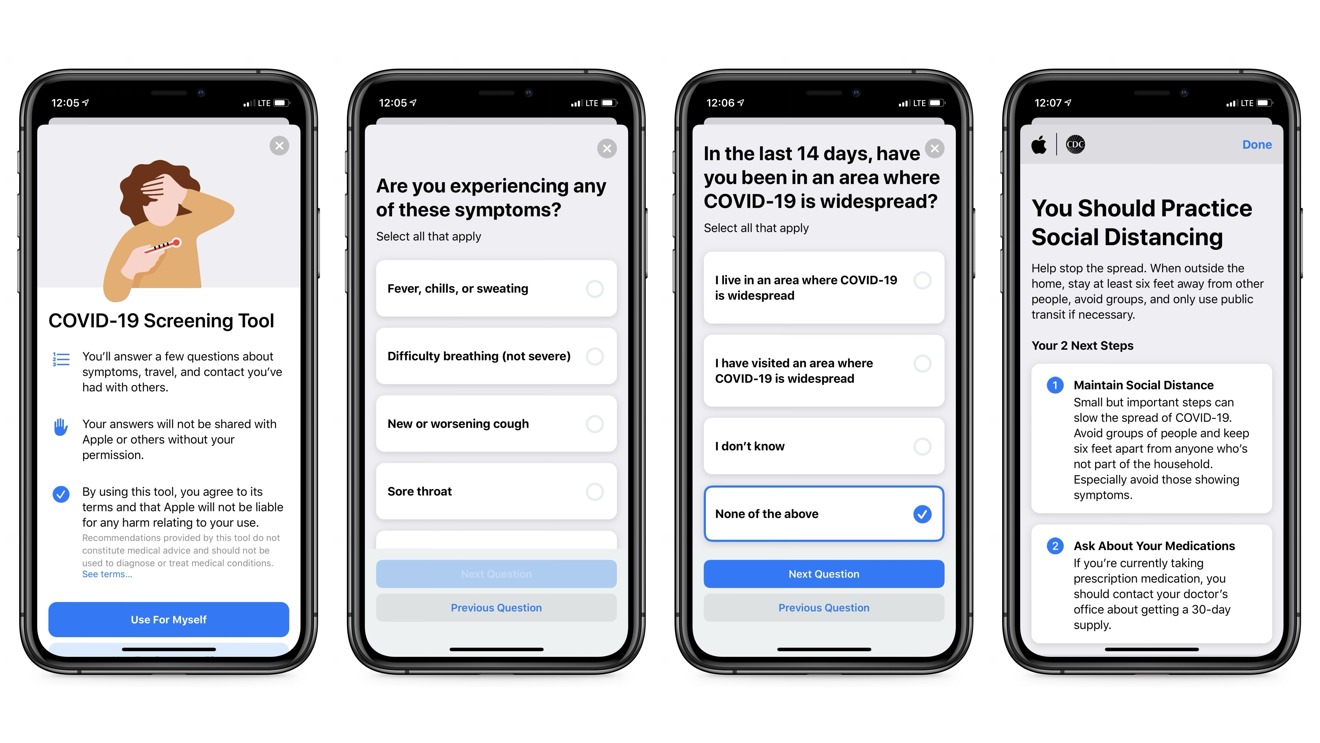

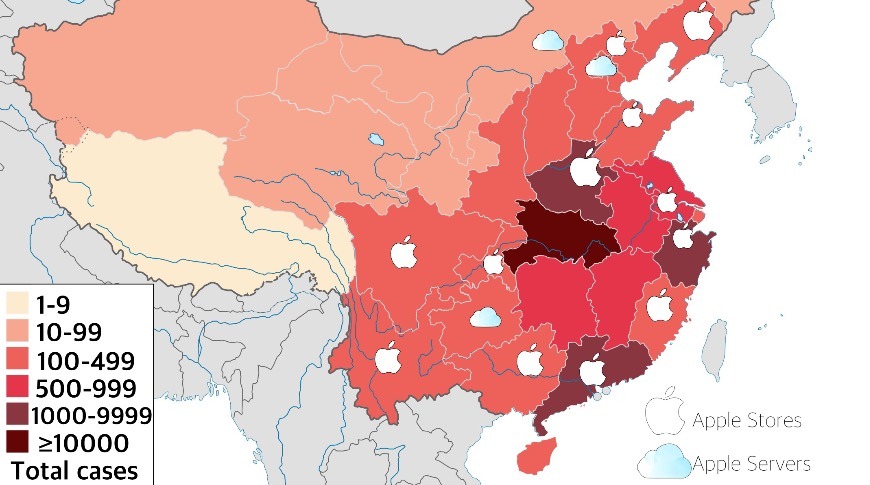
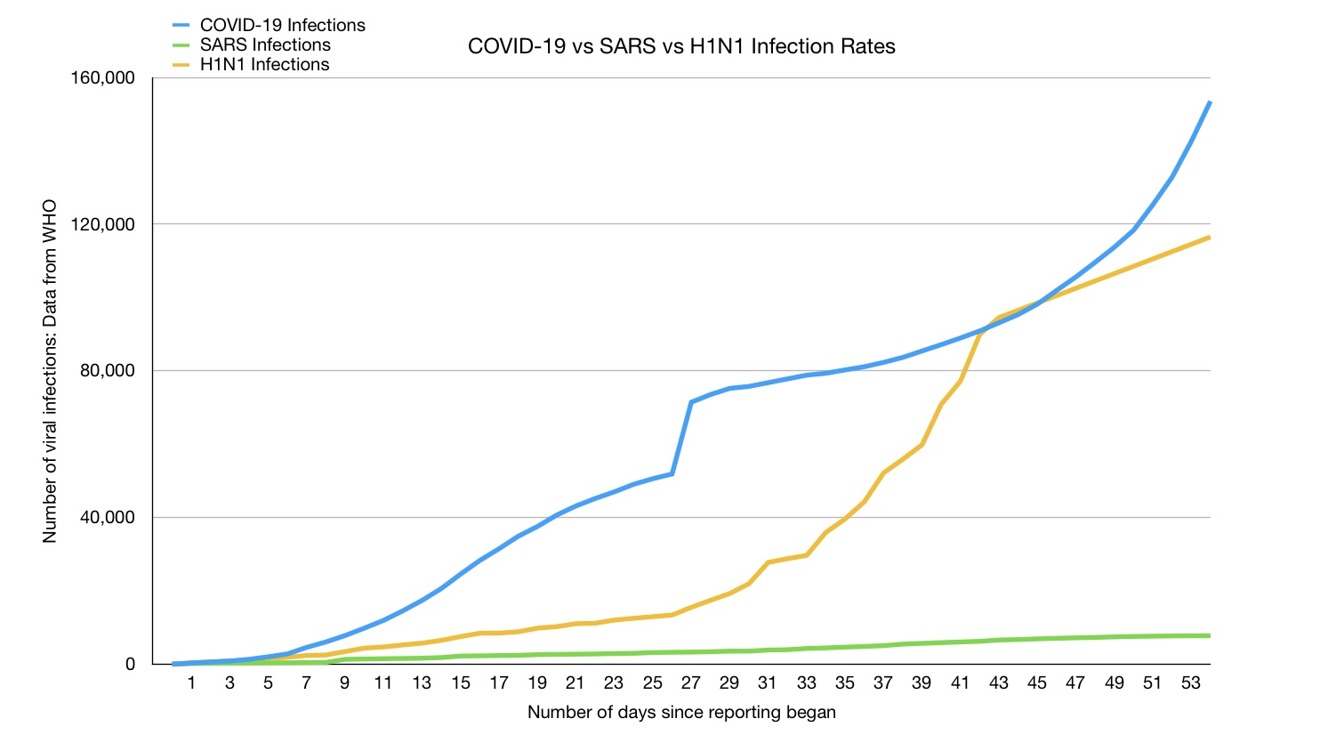

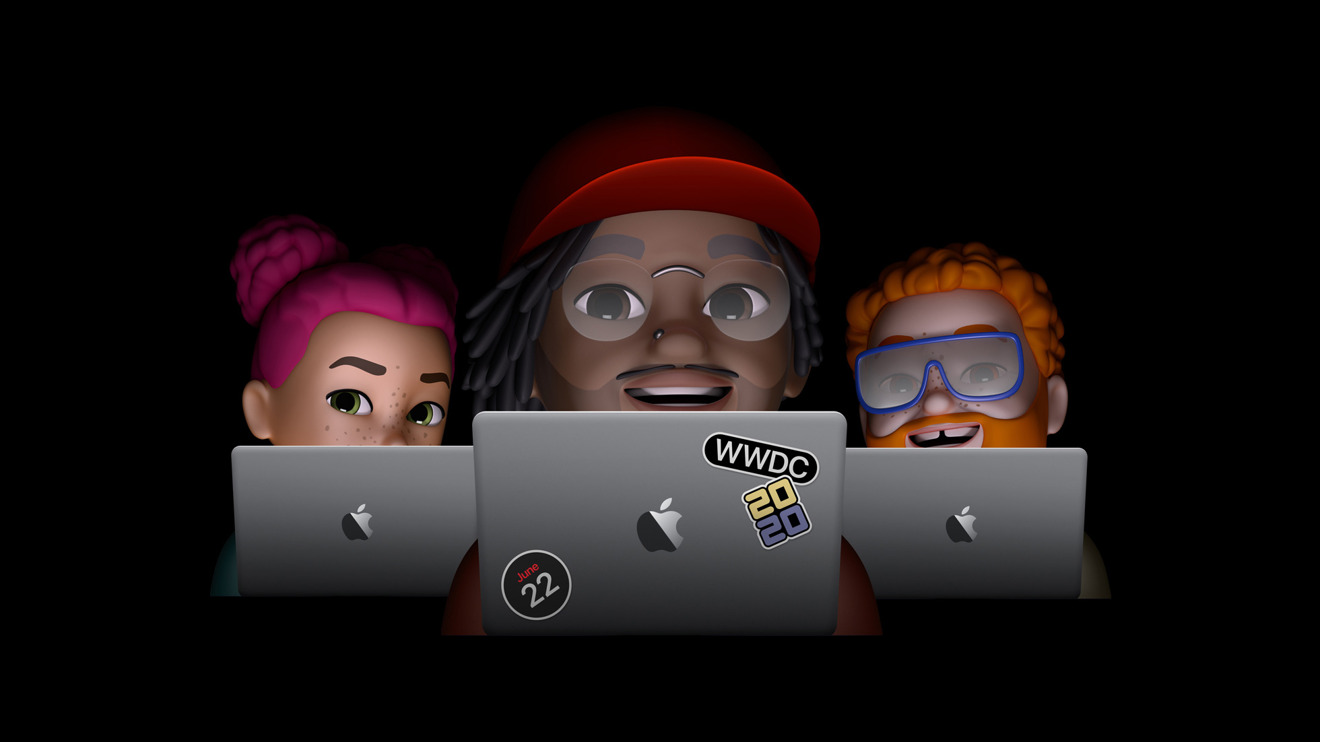

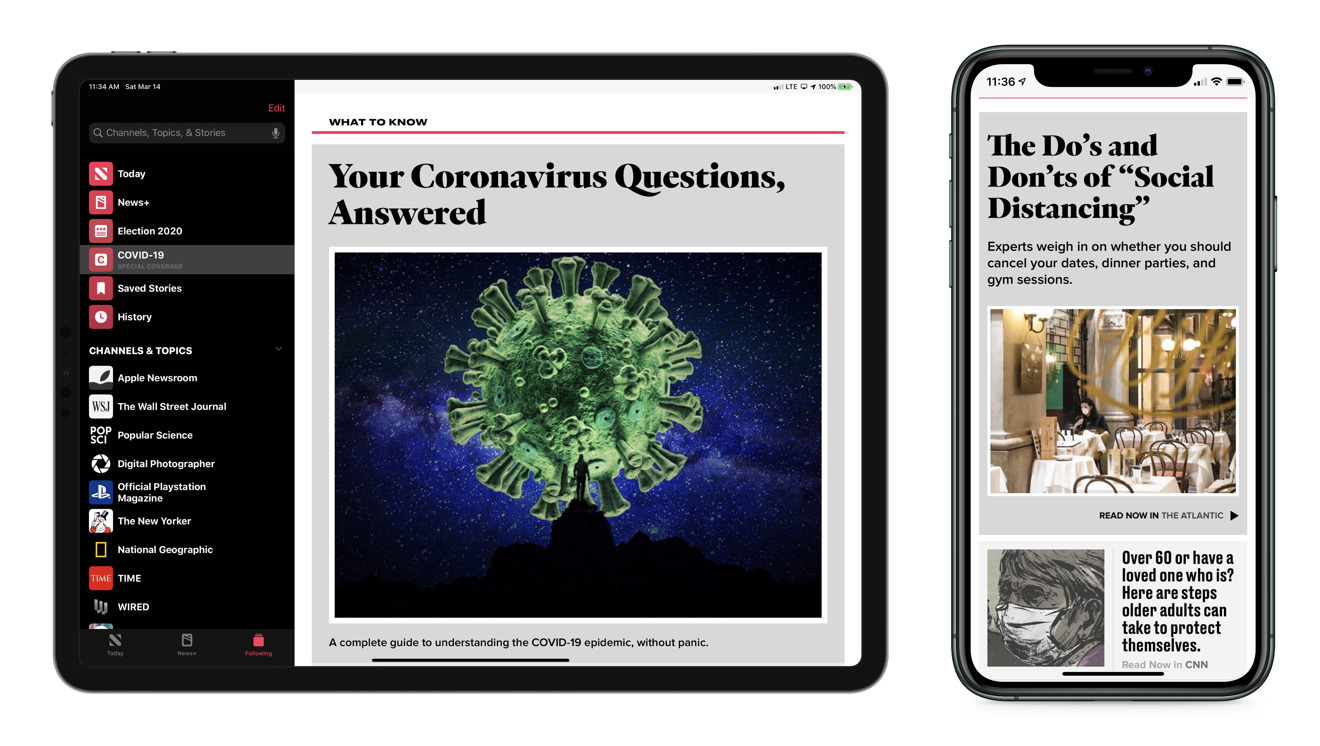

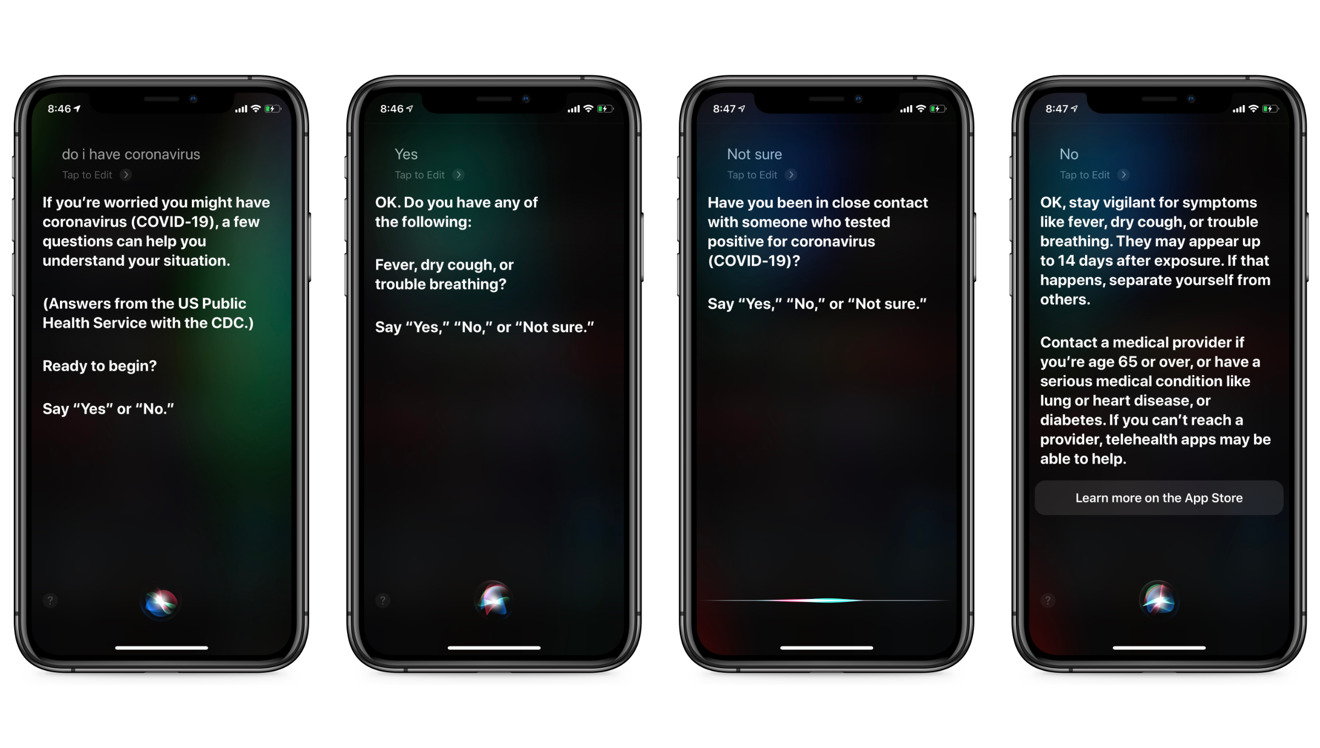

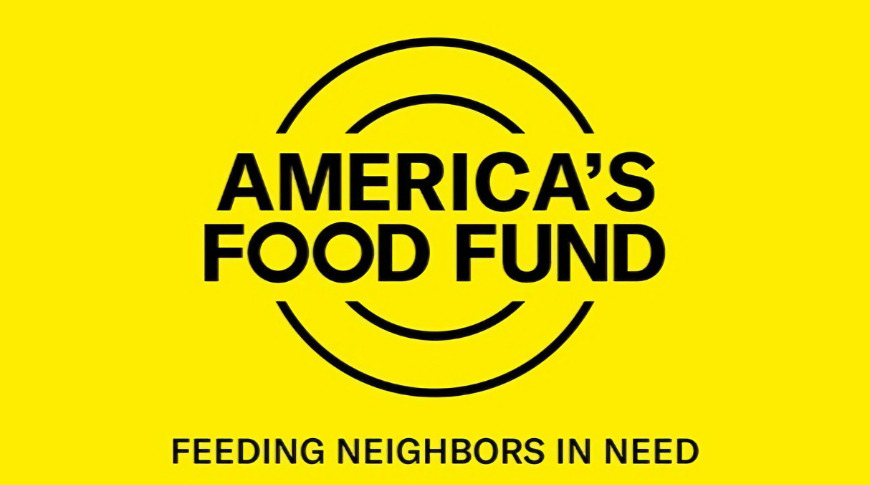
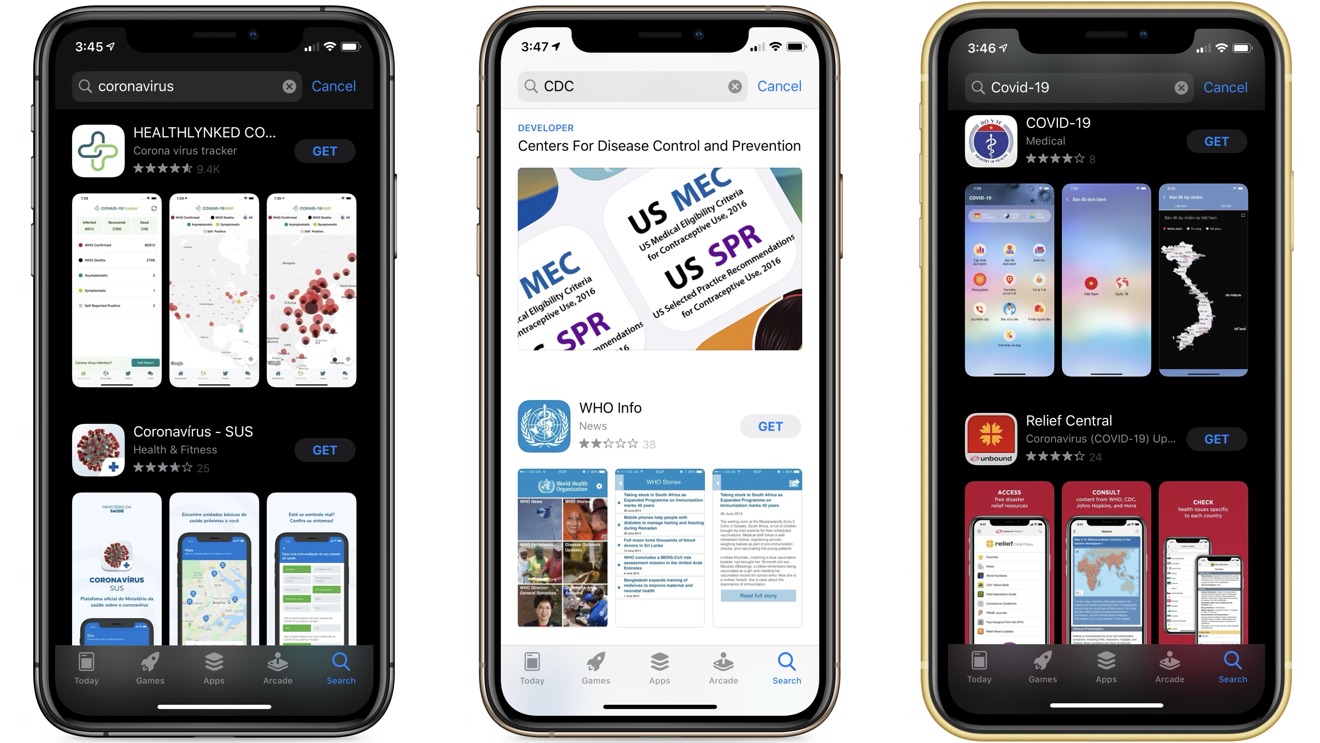

 Malcolm Owen
Malcolm Owen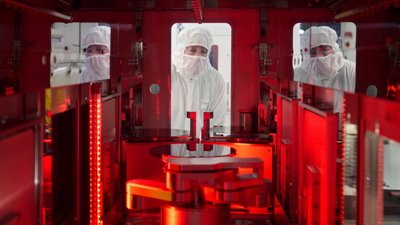


 Marko Zivkovic
Marko Zivkovic
 Andrew Orr
Andrew Orr


